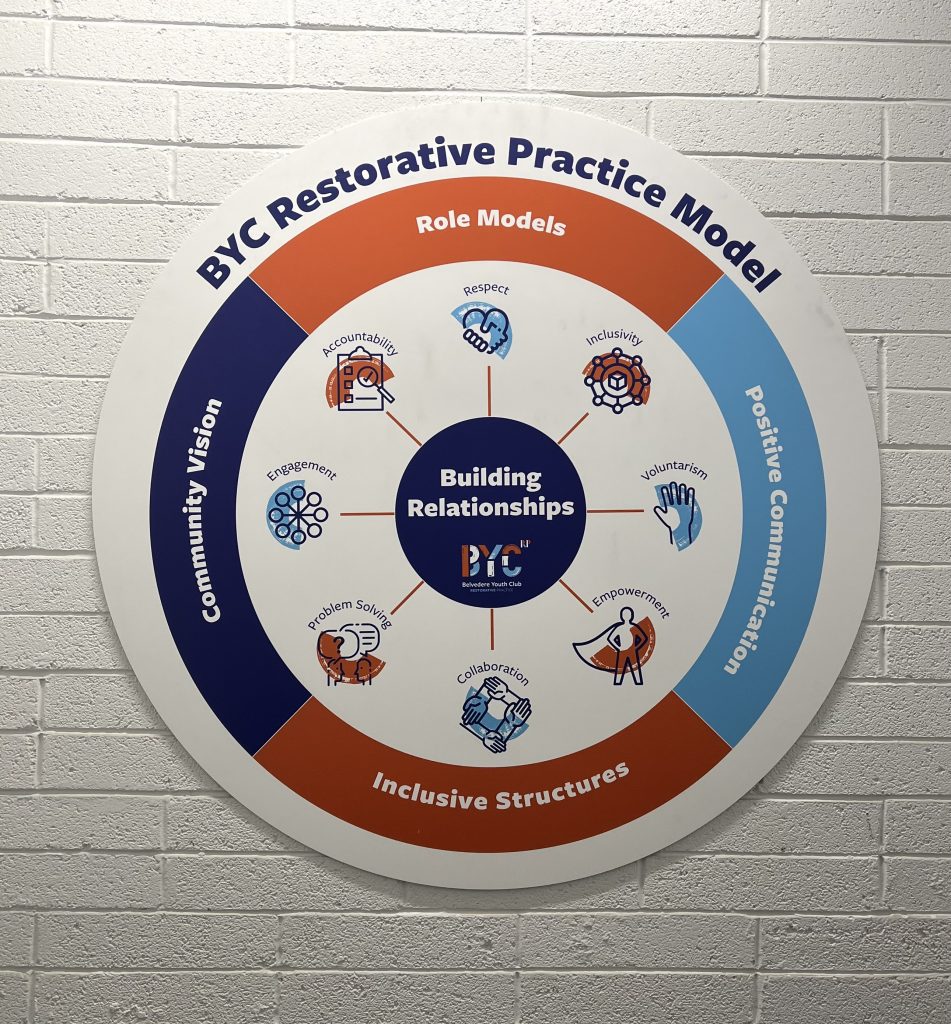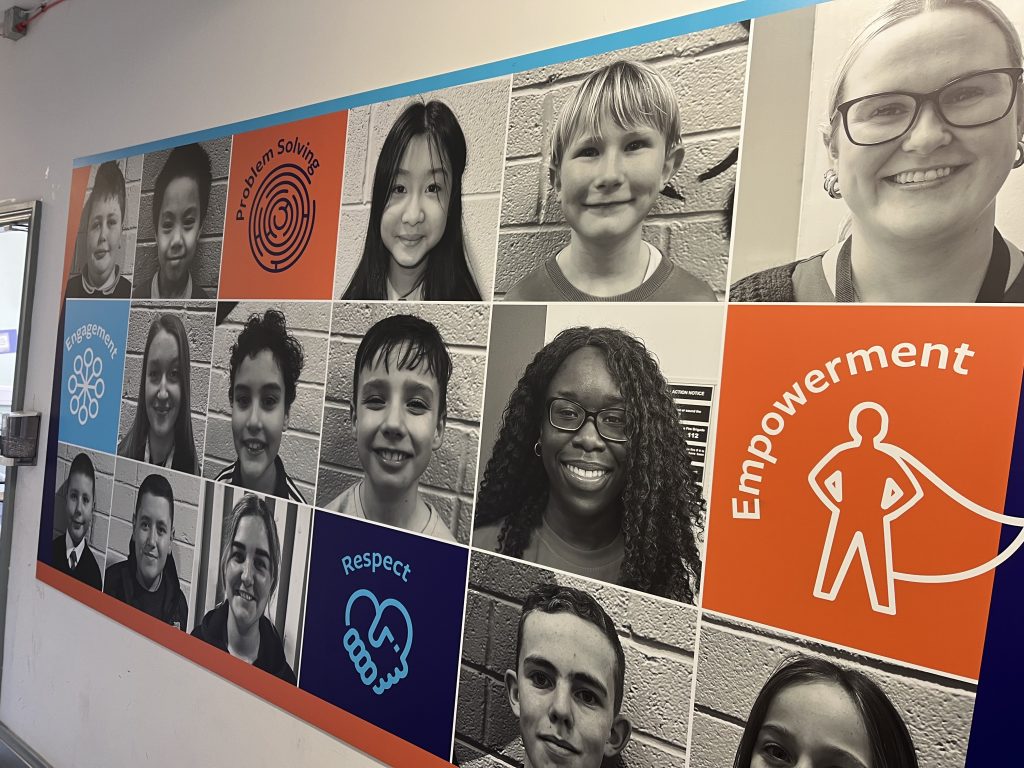In 2019, BYC secured funding from SMBC Aviation Capital through the Community Foundation for Ireland to facilitate the refurbishment of the building and the creation of a hub for Restorative Practice (RP). An RP committee was set up among board members to look at the best ways of moving forward with this ambitious project. Paul Butler and Brid O’Donovan led it.
The first step was the refurbishment of the building, and this story will be told in an upcoming article.
Pre-design conversations
While the refurbishment work was taking place, Brid and Paul talked to as many practitioners and organisations as possible to get a feel for what a successful implementation could look like. BYC already connected with the Early Learning Initiative (ELI) through the National College of Ireland, and Emma Wheatley (ELI programme coordinator) had trained some staff members. Many informal and formal conversations took place with lead restorative practitioners in Ireland and abroad: Claire Casey in CDI, Michelle Stowe from ConnectRP, but also Terry O’Connell, who is known as the father of RP and has developed the RP questions and a model of restorative conferencing. Belinda Hopkins’ work was also an inspiration in designing the BYC model. The BYC RP Strategy describes all the learnings from these conversations and what informed the model design.
Design
Designing the BYC model was a delicate exercise: it had to be meaningful for BYC specific context in North East Inner City, inspiring for other Youth Organisations in similar contexts, easy to understand for everyone involved, including young people and visually powerful. It had to encapsulate BYC’s vision and practices and provide a framework to deepen how everyone understood them. It was completed in the Autumn of 2021.
Paul explains the visual: “I spent much of my professional life designing frameworks, and there were about 5 or 10 versions of this model until we worked it out right. This one tells the correct idea, gives a picture, and is quite visual; you can get that these are the main themes we want to work on. You could look at the spokes inside that are all equally important. It’s like a spinner; they are constantly moving. Community vision drives us; it’s the ultimate driver, it is not just about our young people and the staff. The role models emerge when everybody is trained, on one page and knows what they are doing. The positive communication refers to how we engage with each other, all of us, as board members, staff, and young people. Then obviously, the inclusive structures have to mirror the ethos. Inside the model, you have these themes that are core elements of Youth Work. We are integrating these principles into our RP model: respect, inclusivity, voluntarism, empowerment, collaboration, problem-solving, engagement, and accountability. The centre of it is about how you build relationships. With all the research we did, with all the consultation, all the time, you come back to that idea, how do we build relationships? and the core themes around are the levers. It’s almost like you could spin it around. And each of them should have some way of having meaning within the outer layer of the model.” He adds that all the elements of the outer layer are interconnected. If policies and procedures are in place and RP is not a lived experience for young people and staff, something is going wrong, and it is necessary to look at how each element feeds into each other.

Display
A huge sign is displayed on the wall on the stairs. James, who was tasked to implement it, recognised that it has always a powerful effect on visitors, new parents, interns and other stakeholders. Designing such a model is also a branding exercise that should not be underestimated.
Talking to young people and youth workers, they acknowledge that they may not pay much attention to it daily; it is part of the background, practically and metaphorically. It’s not a tool to provide guidance, “we don’t think about it; we reflect on our practice rather than on the model, says Dean, but it summarises very well what we intend to do”. Denise and Dean, youth workers, clearly identify the inner circle elements as core values of Youth Work. For Denise, respect is the top value. Kim, another youth worker, expresses how interconnected all these values are. For young people, some elements are more critical than others: Jasmine, 8 years old, shares that empowerment was the most important for her, “it’s about standing up for yourself”. Another young person says the model gives “the steps to become a good friend with someone, how to be a good person!”.

The BYC model is all about circularity, interconnectedness, and relationship dynamics, and it powerfully encapsulates the meaningful task of implementing RP in such a vibrant environment.

